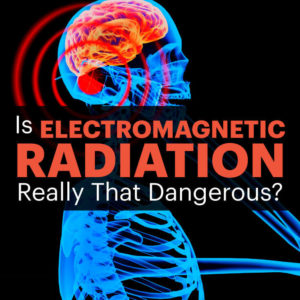RF-EMF radiation can cause damage to DNA, increase the temperature of tissues and alter the blood brain barrier. These effects are real and ARPANSA is actively involved with the EHS group, the medical experts as well as researchers. ARPANSA will continue examine research regarding the health impacts of EMF radiation.
RF-EMF causes emf radiation to man-made electromagnetic fields (EMFs) are associated with DNA damage and other adverse health consequences. EMFs can alter the intracellular ionic levels that are crucial to maintain the electrochemical balance of cells. This can alter the balance of cell metabolism, resulting damages to the DNA. Furthermore exposure to EMFs is also associated with the production of free radicals and reactive oxygen species (ROS).
Exposure to RF-EMF radiation has been associated with changes in the development of male germ cells. This is due to the differentiation of the germ cell into spermatozoa, as well functioning maturation as spermatozoa pass throughout the epididymis. To determine the effect of RF-EMF exposure on male germ cell development A specially designed waveguide device was developed to expose mice that were not restrained to RF-EME at 2.2 W/kg.
In a recent study researchers found that exposure to RF-EME causes the oxidative DNA damage of the spermatozoa. Sperm DNA fragmentation increased by 18% following an entire week of treatment and by 23 percent after five weeks. Furthermore, DNA damage in mitochondria was observed by measuring the level of a biomarker, 8-hydroxy-2-deoxyguanosine (8-OH-dG).
Despite emf radiation , the RF-EMF radiation has not yet been classified as a cancer-causing agent. However, numerous studies have revealed that exposure to RF-EMF radiation can damage DNA integrity in a variety of cell varieties. In one such study researchers were exposed Vero cells to an EMF that was 100Hz, for about 45 minutes. They measured DNA damage at 48 hours following exposure to determine whether the exposure affected DNA integrity.

RF-EMF causes tissue heating
Although the effects of RF-EMF are generally considered to have thermal origins, some studies have demonstrated that non-thermal effects are also observed. These may be the reason for certain of the unsolved findings in epidemiological studies of EMF hypersensitivity. This is why it is crucial to take into account non-thermal effects when conducting an extensive review.
The non-thermal effects that RF-EMF can have may be mediated by the cell membrane. This is a field where research has been extensively examined. In particular, the electrochemical behavior of cell membranes is being studied. It is believed that RF-EMF energy higher than 1 MHz is transferred to tissue through dielectric as well as the dissipation of ions. Studies of the theory have suggested that the energy transferred to tissues could be as high as 200 kV/m.
The electric properties of tissues are regulated through the distribution and composition of water molecules and other substances in the body. This determines how well absorbed EMR RF is by various tissues. Organs with greater conductivity are likely to absorb more of the field and cause more of an effect. This is why the level of tissue heating doesn't increase continuously as it moves from the exterior to the body and is only noticeable in hot areas. Bone and fatty tissue is less susceptible to heating by RF as compared to other tissues, since they have a low water content.
The depth of the field's penetration depends on the frequency and strength that the electromagnetic field has. Muscle tissue absorbs more radiation than most tissues, and transforms it into heat more effectively. Typically the penetration depth for RF EMF is determined by millimeters (mm). The higher the frequency, the more shallow the penetration.
RF-EMF causes blood-brain barrier disruption
Researchers have discovered that RF EMF could disrupt the blood-brain barrier which can alter sleep patterns and neurotransmitter levels. Furthermore, the effects on the effects of EMF on brain activity have been linked to neurodegenerative diseases. For example, EMF from mobile phones can affect electroencephalogram activity and sleep patterns, as well as the activity of nitric oxide and xanthin oxidase.
Researchers at Vienna University have studied the effects of exposure to RF-EMF in brain cells. They also studied the effects of ELF EMF on nervous system. Although the cellular mechanisms that are involved aren't fully comprehended but there is a clear association between ELF-EMF exposure and myelin depletion. This relationship might account for the electro-hypersensitivity symptoms of electro-hypersensitivity. However, there are tested methods to regenerate myelin inside the brain.
Researchers have found that exposure to frequencies of 900 millimeters EMF increased the permeability of the BBB and increased indicators of neuronal injury in rodents. They also observed increased exovasation of albumin into neurons. Additionally, they observed in 30 minutes 900 MHz exposure, 99mTc-MIBI increased its diffusion into the brain. But, emf radiation did not occur when using Evans blue-based injections.
However, RF-EMF is not able to provide a definitive mechanism for disrupting the BBB. Research suggests that EMF exposure may increase erythrocyte cell membrane permeability, which could influence the BBB and increase calcium ion efflux. Moreover, the presence of a 99mTcMIBI radiotracer inside the brain is also associated with an increase in the permeability of BBB.
